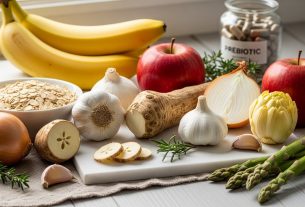Estimated Reading Time: 7 minutes
Estimated Reading Time: 7 minutes
EEer feel like deciphering a food label is akin to cracking a secret code? You’re not alone.
Between the buzzwords and the tiny font, navigating the world of how to read nutrition labels can feel overwhelming.
But fear not, fellow health enthusiasts!
This isn’t about becoming a food scientist; it’s about empowering yourself to make informed choices that fuel your well-being.
I’m here to break it down, share some personal experiences, and equip you with practical tips to become a nutrition label whiz. Let’s get started!
The journey to understanding how to read nutrition labels starts with understanding the “why.” In a world saturated with processed foods, being able to discern what you’re actually consuming is crucial.
The information on these labels holds the key to managing your weight, preventing chronic diseases, and optimizing your overall health.
Think of it as a powerful tool in your health arsenal.
Let’s start with the anatomy of a nutrition label. Each label is divided into several key sections. The first thing you’ll see is the serving size.
This is critical. The information on the label, including the calories and all the nutrient values, is based on this serving size.
So, if the label says a serving is one cup, and you eat two cups, you have to double all the values.
Next, you’ll encounter the calories. Calories are the unit of energy your body gets from food. Then you see the % Daily Value (%DV).
This tells you how much a nutrient in a serving of food contributes to a daily diet.
The 5/20 rule is a simple rule of thumb; a 5% DV or less is low, while 20% DV or more is high.
This helps you quickly determine if a food is a good source of a particular nutrient.
Now, let’s delve deeper into the specific nutrients. Pay close attention to:
I remember when I started paying attention to labels. I was shocked to find out how much sugar was hiding in my seemingly healthy breakfast cereal!
It was a turning point, and it led me to start making healthier choices by understanding how to read nutrition labels better.
Beyond the numerical data, the ingredient list is your friend. Ingredients are listed in descending order by weight.
So, the first ingredient is the one that the food contains the most of. This helps you quickly identify the primary components of a product.
Be wary of products that list sugar, salt, or unhealthy fats as the first few ingredients.
Also, be mindful of hidden sugars. There are many names for sugar, including corn syrup, dextrose, fructose, glucose, sucrose, and more.
The more added sugars in a product, the less healthy it is likely to be. Read the ingredient list closely!
Some ingredients are best to avoid or limit. Here are a few to watch out for:
I once bought a seemingly “healthy” granola bar that was loaded with trans fats. Now, I always scan the ingredient list like a hawk!
It’s all part of learning how to read nutrition labels.
Now that you know the basics, how do you apply this knowledge in the real world, in the midst of the bright lights and tempting displays of a grocery store?
Here are some practical tips:
I like to bring my own reusable shopping bags that are printed with my meal plans to stay focused, helping me avoid distractions, especially in the junk food aisles!
This is just one of my personal tips for practicing how to read nutrition labels.
While it’s important to understand how to read nutrition labels, don’t let it consume you. It’s about balance.
Sometimes, you might crave a treat. That’s okay! Enjoy it, but make informed choices most of the time. There’s no need to be overly restrictive.
Focus on overall dietary patterns and not just single meals or products. It’s a marathon, not a sprint.
Also, remember that nutrition labels can be complex, especially regarding complex nutrient interactions.
Consulting with a registered dietitian or nutritionist can provide personalized guidance based on your individual needs and health goals.
They can help you analyze your current diet and create a sustainable plan. Don’t be afraid to ask for professional help; your health is worth it.
Furthermore, research continues to evolve. Staying informed about current dietary recommendations and guidelines is essential.
Websites like the FDA and the USDA offer up-to-date information, including guidelines on nutrition labels and other helpful resources.
This information helps guide your choices and further helps you practice how to read nutrition labels more effectively.
And let’s not forget that a healthy lifestyle includes more than just food.
Exercise, sleep, and stress management all play critical roles in overall well-being.
In essence, learning how to read nutrition labels is not just about counting calories or restricting certain ingredients; it is about taking charge of your health, making educated decisions, and building a sustainable approach to healthy eating.
It’s about nourishing your body with the right fuel and empowering yourself with knowledge.
Over the years, I’ve found that the best way to learn is to make it a habit.
Each time you go to the grocery store, dedicate a few minutes to compare labels and make an informed choice.
The more you practice, the easier it becomes.
Let’s keep in mind the importance of overall wellness, which includes a healthy diet, combined with exercise, sleep, and stress management.
It’s about making a holistic effort to live a healthier life.
As a final thought, remember that healthy eating is a journey, not a destination.
There will be times when you make choices that aren’t perfect, and that’s perfectly fine.
The key is to keep learning, keep growing, and keep striving toward a healthier you.
So, take a deep breath, grab a snack (and check the label!), and start your journey toward healthier eating. You’ve got this!
Frequently Asked Questions
What is the most important thing to look for on a nutrition label?
While many factors are essential, the serving size is arguably the most crucial piece of information. All the other values, like calories, fat, and nutrients, are based on the serving size. Ignoring this can lead to misinterpreting how much you’re actually consuming and impact your health goals. Furthermore, always note how many servings you consume during one sitting to calculate the total nutrient intake and the calories ingested.
How can I easily identify unhealthy ingredients on a nutrition label?
The ingredient list is your primary tool. Ingredients are listed by weight, so the ingredients at the beginning of the list are present in the largest quantities. Look out for high amounts of added sugars (listed under various names, e.g., corn syrup, dextrose, sucrose), trans fats (listed as partially hydrogenated oils), and excessive sodium. If these ingredients are among the first few on the list, the food is likely not the healthiest choice. Compare various products with similar purposes to ensure that you are selecting the healthiest option for your needs.
What is the difference between “total sugars” and “added sugars” on a nutrition label, and why does it matter?
Total sugars represent all the sugar in a food, including naturally occurring sugars like those in fruit and milk. Added sugars are sugars that are added during the processing of a food. It’s important to pay attention to the difference because naturally occurring sugars aren’t always a problem, whereas added sugars provide empty calories and contribute to weight gain, inflammation, and other health issues. Foods with a high percentage of added sugars should be limited. The added sugars value helps you assess the overall healthiness of a product by revealing how much extra sugar has been included.
How do the percentage Daily Values (%DV) on nutrition labels help me?
%DV is a valuable tool for determining how much a nutrient in one serving of food contributes to your overall daily diet. This value is presented on all nutrition labels. Generally, a value of 5% or less is considered low, while a value of 20% or more is high. Therefore, when selecting foods, aim for items that are low in fats, sodium, and added sugars and high in beneficial nutrients like fiber, vitamins, and minerals. By keeping these benchmarks in mind, %DV helps you make quick, informed choices to meet your nutritional requirements.




